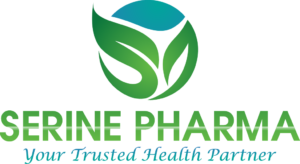The medicine production and marketing industry plays a crucial role in global healthcare, ensuring that essential drugs reach those who need them most. This sector encompasses a broad range of activities, from research and development (R&D) to manufacturing, distribution, and marketing of pharmaceuticals. In this blog, we will explore the intricacies of the industry, including the key players, challenges, regulatory landscape, and the future trends shaping this vital sector.
1. Overview of the Medicine Producing Industry
The medicine producing industry is responsible for discovering, developing, and manufacturing drugs that treat various medical conditions. It includes large multinational pharmaceutical companies, small biotech firms, and generic drug manufacturers. The industry operates at the intersection of science and business, requiring significant investments in R&D, clinical trials, and regulatory compliance.
Key Phases in Drug Development:
- Research and Development (R&D): This is the initial phase where scientists discover new drug compounds and conduct preclinical studies to evaluate their safety and efficacy.
- Clinical Trials: These trials involve testing the drug on humans in several phases to assess its safety, dosage, and effectiveness. It is one of the most time-consuming and expensive parts of drug development.
- Regulatory Approval: Once clinical trials are successfully completed, companies submit data to regulatory bodies like the FDA (U.S.), EMA (Europe), or other national agencies for approval.
- Manufacturing: After approval, drugs are manufactured under stringent quality controls to ensure consistency, safety, and efficacy.
- Distribution: Finally, the drugs are distributed to pharmacies, hospitals, and other healthcare providers.
2. The Role of Marketing in the Pharmaceutical Industry
Marketing is a critical component of the pharmaceutical industry, involving strategies to promote drugs to healthcare professionals and consumers. Unlike most industries, pharmaceutical marketing is heavily regulated due to the potential impact on public health.
Marketing Channels in Pharmaceuticals:
- Direct-to-Consumer Advertising (DTC): Common in countries like the U.S., DTC advertising includes TV, print, and digital ads aimed directly at patients, encouraging them to ask their doctors about specific medications.
- Physician Detailing: This involves pharmaceutical sales representatives meeting with doctors to provide information on new drugs, often supported by samples, educational materials, and sponsored medical conferences.
- Digital Marketing: With the rise of digital platforms, companies increasingly use social media, websites, and email campaigns to reach both healthcare professionals and patients.
3. Regulatory Landscape
The pharmaceutical industry is one of the most regulated sectors globally, with each country having its regulatory body overseeing the approval and marketing of drugs. Regulations are designed to ensure that medicines are safe, effective, and manufactured to the highest standards.
Key Regulatory Bodies:
- FDA (U.S.): Oversees drug approval, manufacturing, and marketing in the United States.
- EMA (Europe): Responsible for the scientific evaluation and supervision of medicines within the European Union.
- MHRA (UK): Regulates medicines and medical devices in the United Kingdom.
- CDSCO (India): Central Drug Standard Control Organization that oversees drug regulation in India.
Regulatory compliance is complex and costly, requiring companies to maintain detailed records, conduct regular audits, and adhere to Good Manufacturing Practices (GMP).
4. Challenges in the Medicine Producing and Marketing Industry
The pharmaceutical industry faces several challenges that impact drug production and marketing:
- High R&D Costs: Developing a new drug can take over a decade and cost billions of dollars. Only a small percentage of drug candidates make it to market, making R&D a risky investment.
- Patent Expirations: Patents provide a period of market exclusivity, but once they expire, generic competition can significantly reduce revenue.
- Pricing and Access: High drug prices have become a contentious issue, leading to debates on how to balance innovation with affordability and access to medications.
- Regulatory Hurdles: Navigating regulatory requirements can be complex, and delays in approval can impact a drug’s market potential.
- Counterfeit Drugs: The global market is plagued by counterfeit medications, posing significant risks to patient safety and brand reputation.
5. Future Trends in the Industry
Several trends are shaping the future of the medicine producing and marketing industry:
- Personalized Medicine: Advances in genomics are enabling the development of personalized treatments tailored to individual genetic profiles, improving outcomes and reducing side effects.
- Biologics and Biosimilars: Biologics, derived from living cells, are becoming increasingly important, while biosimilars offer cost-effective alternatives to these high-priced drugs.
- Digital Health Integration: Digital health technologies, including telemedicine, wearable devices, and AI-driven diagnostics, are transforming how drugs are marketed and prescribed.
- Sustainability: The industry is under pressure to adopt more sustainable practices, including reducing the environmental impact of manufacturing processes and packaging.
Conclusion
The medicine producing and marketing industry is a dynamic and rapidly evolving sector that sits at the heart of global healthcare. Despite the challenges, the industry continues to innovate, bringing new treatments to market that improve patient outcomes and enhance quality of life. As technology advances and personalized medicine becomes more prevalent, the future of the pharmaceutical industry promises even greater possibilities for addressing unmet medical needs.
Understanding the complexities of this industry is essential for stakeholders, including healthcare professionals, patients, and policymakers, as they navigate the delicate balance between innovation, regulation, and access to medicines.

